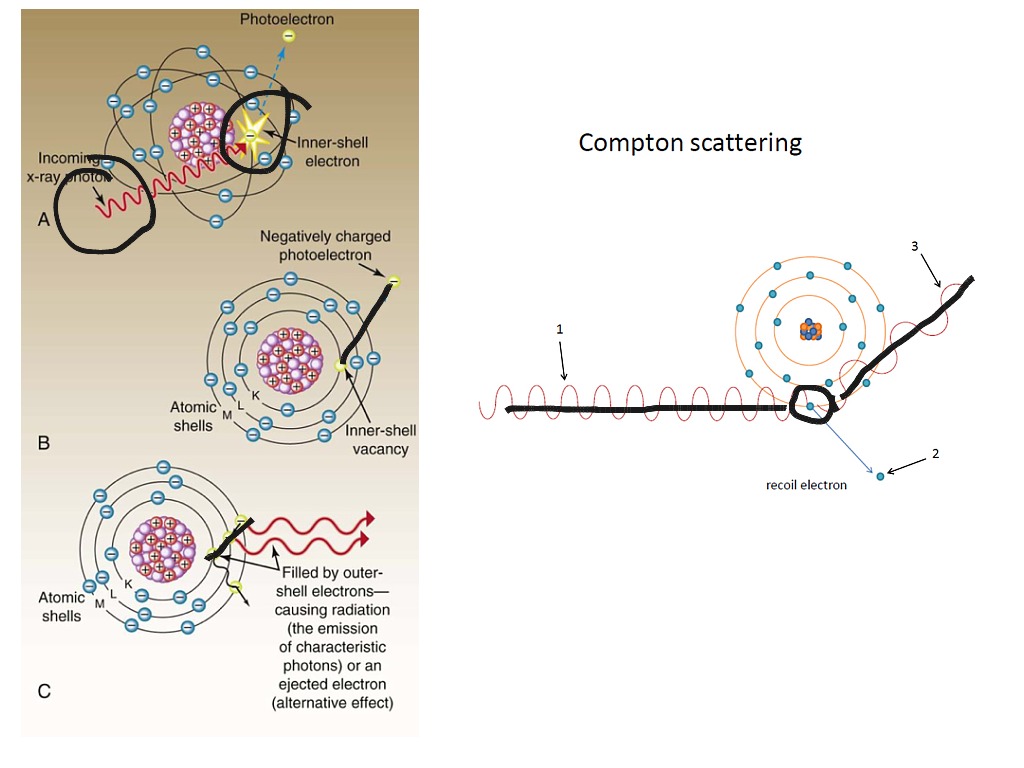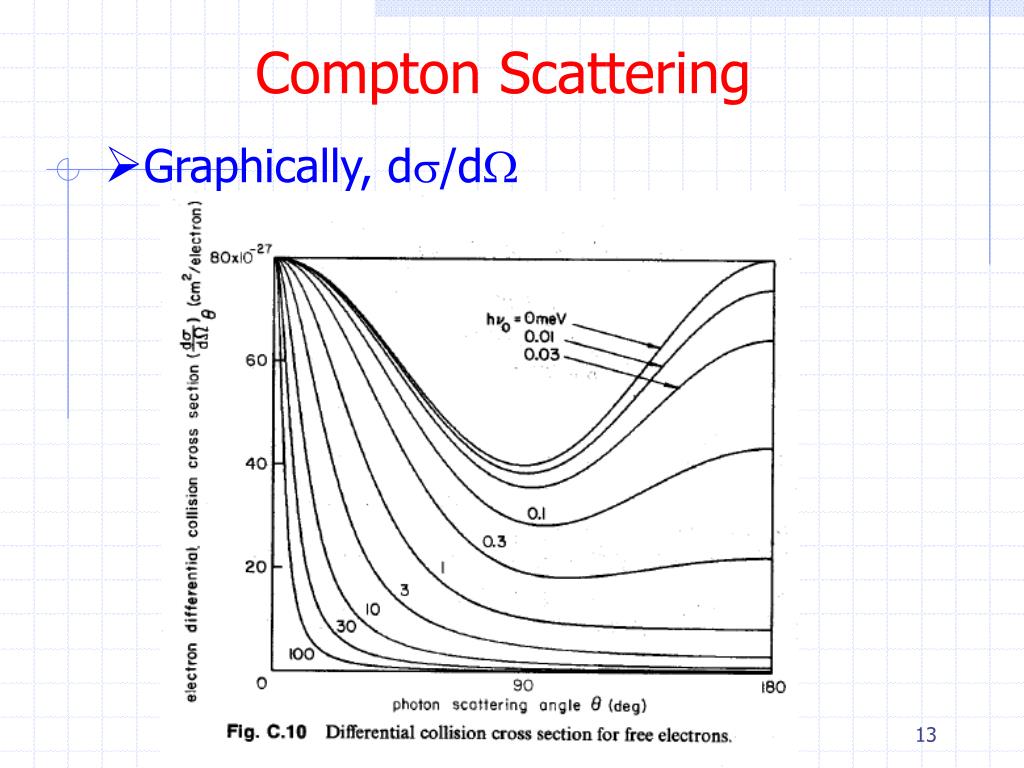
2.1 Derivation of the scattering formulaĬompton scattering is an example of inelastic scattering, because the wavelength of the scattered light is different from the incident radiation.



If the photon loses energy, its wavelength will increase and this is called Compton Scattering. This is the quantum mechanical or high-energy extension to Thomson Scattering. Looking at the whole imaging chain however, compton scattering is very important and wanted in Xray sensor as it is a way to absorb the X-ray energy in order to detect it. Compton scattering is the inelastic scattering of a photon off of an electron. So ideally all photons which have been scattered will change their vector at some point and will subsequently be blocked by the anti scatter grid. For example, it was observed that in certain experiments. During the following 90 years up to the present, numerous experiments and calculations have been carried out with regard to Compton scattering that continually revealed asymmetries and posed riddles. To get rid of these scattered photons, the typical aproach is to introduce an anti scatter grid, which is build out of small absorbing walls which are aligned to the focus of the X-ray tube. Compton simply assumed for his calculations that the electron rested freely in space. Inverse Compton scattering involves the scattering of low energy photons to high energies by ultrarelativistic electrons. What is the largest shift that can be expected in this experiment Strategy To find the wavelength of the scattered X-ray, first we must find the Compton shift for the given scattering angle, 30. Find the wavelength of the X-ray scattered at a 30 ° 30 ° angle. This leads to a blurred background signal which will generally decrease your image quality. Compton Scattering An incident 71-pm X-ray is incident on a calcite target. As a result you will loose the information of that particular x-ray quantum. In the Compton analysis, the scattering process is an- alyzed as a collision of two particles: an incident photon and an electron initially at rest. Compton effect, also called Compton scattering, increase in wavelength of X-rays and other energetic electromagnetic radiations that have been elastically scattered by electrons it is a principal way in which radiant energy is absorbed in matter. It changes the angle of your x ray photon and it will hit some other pixel which is not on its initial trajectory. Here, Compton scattering in your object is generally a bad thing. Compton scattering is generally neglected in diffraction experiments because the incoherent radiation it generates does not give rise to interference effects and therefore is negligible at Bragg peaks. I am not sure about material testing though.Īs you talk about anti scatter grids, I assume that your question targets classical X-ray imaging. Generally Compton scattering can be used for techniques as Compton-Imaging which is an active field of reseach and as far as I am aware of has yet not made it into at least medical imaging. For example Water and Calcium (bones) the Compton scattering will differ by 1.5 orders of magnitute mor medically used X-ray energies (~60-150kV) ( see fig. The X-ray loses energy depending on the angle of scattering the total momentum and energy of the photon and electron are conserved. their contribution to the total amount of absorption/scatter, is depend on the interaction material. First observed by Arthur Compton in 1923, the Compton effect occurs when an incident X-ray photon scatters with an electron. Here the importance of Compton and photoelectric scattering, i.e. Let's start with the general interaction between X-ray and matter. The rest mass of the electron is determined. I think the word importance has some different aspects for your question. Remotely controlled Compton scattering: relativistic dynamics and the electron mass.


 0 kommentar(er)
0 kommentar(er)
